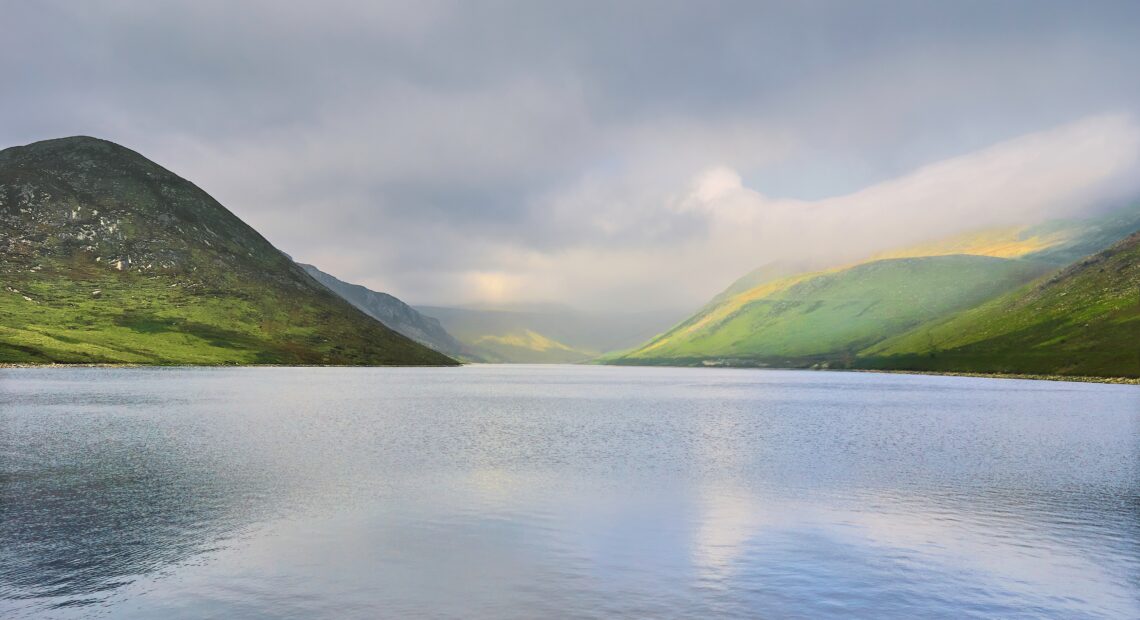Every summer, millions of people across the country stay indoors to keep cool and stay healthy. In a summer where temperatures skyrocket, there’s nothing more satisfying than the feeling of a crisp, air-conditioned room. These are the reasons we should love water batteries.
But heat is not just inconvenient; it can be dangerous, especially because of the effects of climate change. If everyone cranks up their air conditioning or turns on fans, the grid—which shuttles our electricity from place to place—can short-circuit, putting millions at risk—from hospitals, grocery stores, to nursing homes, and even our schools.
One of the biggest ways our grid avoids short-circuiting? Water batteries.
Also known as pumped storage hydropower, water batteries are made of two big pools of water, one high above the other, that act like an hourglass to provide power. They’re some of the biggest batteries on Earth, and that’s just one of many reasons we love pumped storage hydropower—and you should too!
Here are 9 reasons to appreciate how important—and powerful—water batteries are, and why we need to continue investing in these important resources.
- Grid overload? Thanks to water batteries, it’s rare. When other energy sources like solar and wind make more electricity than nearby homes need, that extra power pushes water up into the water battery’s top pool where it waits, “charging” the water battery. Then, when needed—like during a grid-gutting heat wave—the water is released from that top pool and flows down, spinning a turbine that creates electricity to power your lights, refrigerator, or other essentials.
- Mother nature is no problem for water batteries. Renewable energy is crucial for a clean energy future, but sometimes, mother nature makes it challenging. Water batteries can fill energy gaps on cloudy and still days, making sure clean energy is still reliable energy.
- Pumped storage hydropower can provide huge energy storage potential. Pumped storage hydropower projects are some of the biggest long-term energy storage systems around today. You might have yet to see this invisible force, but it’s helping to power the world around you.
- Pumped storage hydropower can store up to 553 gigawatt-hours of energy. That could power video gaming across the entire country for about a week.
- Pumped storage is the most efficient large energy storage system currently available—clocking in at 70-80%! Because it takes energy to store energy, no storage system—not even typical batteries—are 100% efficient. Pumping water into a water battery’s top reservoir requires a burst of energy. Still, a good 80% of what goes up, comes back down.
- Hydropower and pumped storage facilities provide 40% of the power needed to jumpstart a grid after a blackout. Ice storms, wildfires, and even hackers could stop the electric grid from powering our homes and offices. When emergencies knock out other energy sources, water batteries can turn on fast to keep people safe and comfortable.
- Natural disasters are no match for hydropower and pumped storage’s flood control and irrigation benefits! Water batteries can save you from those, too—they help absorb that extra water and use it to power your home (or help put out those wildfires that can harm the grid). The pools of water can also give clean water to crops, and you, too, making sure you don’t go thirsty during a heatwave.
- Pumped storage hydropower can grow without any new construction. How does that work? Through “capacity increases” or upgrades to facilities that make them more powerful.
- Water batteries are almost a century old. 90 years in fact. The first water battery—dubbed the 10-mile storage battery—popped up in Connecticut in 1930. Almost a century later, water batteries still provide energy at a low price. Here’s to the next 90.













